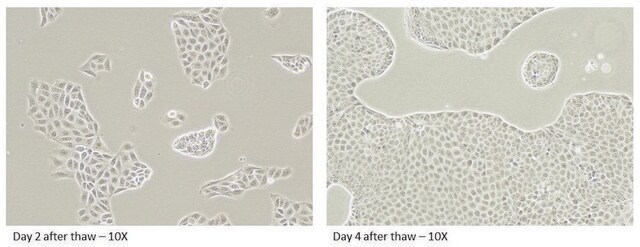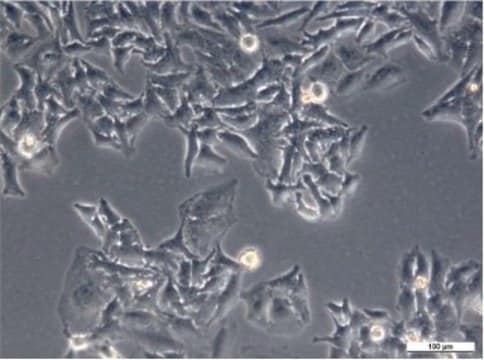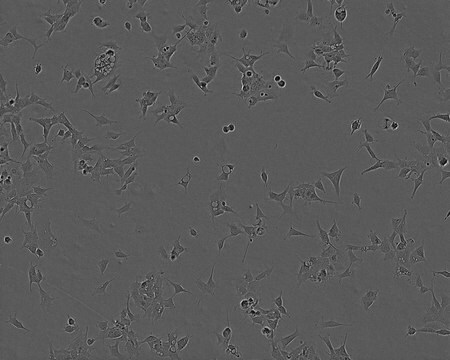MDCK I
62106, dog kidney, Polarised epithelial
Synonym(s):
MDCK1 Cells, MDCKI Cells, Madin Darby Canine Kidney Cells, NBL-2 Cells
Sign Into View Organizational & Contract Pricing
All Photos(1)
About This Item
UNSPSC Code:
41106514
eCl@ss:
32190102
Recommended Products
product name
MDCK I, 00062106
biological source
dog kidney
growth mode
Adherent
karyotype
Dog
morphology
Polarised epithelial
products
Not specified
receptors
Not specified
technique(s)
cell culture | mammalian: suitable
shipped in
dry ice
storage temp.
−196°C
Cell Line Origin
Canine Cocker Spaniel kidney
Cell Line Description
MDCK I - Madin-Darby canine kidney- is a subclone derived from the heterogeneous parent line MDCK (Madin-Darby canine kidney, Sigma Catalogue number. 85011435). MDCK-I cells, also known as "low passage MDCK" are reported to display a high electrical resistance (over 1000 Ohm/cm2) and form a monolayer with characteristics of tight epithelia of the renal collecting duct. Grown on filters, the cells show a cuboidal polarised morphology and express microvillae-like projections on the apical surface. Cultures on glass possess junctions but no polarised or columnar morphology. MDCK-I cells display an adrenalin, vasopressin and prostoglandin E sensitive adenyl cyclase. Please note, these cells were mycoplasma erradicated prior to deposit at ECACC. Epithelial phenotype may be unstable. Incomplete harvesting at confluence may select for smooth-muscle phenotype this is important if cells being used for transepithelial resistance studies.
Application
Virus susceptibility: Influenza virus, vesicular stomatitis virus and many other viruses.
Culture Medium
Subculture Routine
Split sub-confluent cultures (70-80%) 1:3 to 1:6 i.e. seeding at 2-4 x 10,000cells/cm2 using 0.25% tryspin or trypsin/EDTA; 5% CO2; 37°C
Other Notes
Additional freight & handling charges may be applicable for Asia-Pacific shipments. Please check with your local Customer Service representative for more information.
Certificates of Analysis (COA)
Search for Certificates of Analysis (COA) by entering the products Lot/Batch Number. Lot and Batch Numbers can be found on a product’s label following the words ‘Lot’ or ‘Batch’.
Already Own This Product?
Find documentation for the products that you have recently purchased in the Document Library.
Our team of scientists has experience in all areas of research including Life Science, Material Science, Chemical Synthesis, Chromatography, Analytical and many others.
Contact Technical Service





